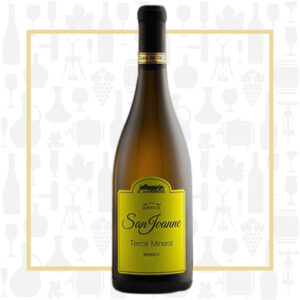Cellar Profile
Casa de Cello is a family business that has been dedicated to winemaking for four generations. In the mid 1980s, one of the owners, João Pedro Araujo, decided to focus on vineyard health and new oenological technology to produce quality Vinho Verde — distinct from the light. spritzy, mass-produced white wine styles of the region — at their Quinta de Sanjoanne Estate. This 14-hectare property is located in the town of Mancelos, in the historic Minho province in the far north of Portugal. Here, the focus is on sustainably growing grapes native to the region and producing wines with character, depth and the capacity to evolve over time. These wines are made with minimal intervention and painstaking care is taken to ensure only the finest fruit from carefully-tended vines is used. The limited volume of wines produced are bottled and labelled by hand and have surprising ageability. In the late 1990s, the family acquired their second estate, Quinta da Vegia, located southeast of Vinho Verde, in the Dão region.
Region
Vinho Verde is located within the Minho region of northern Portugal, the largest wine producing region in the country. The region is comprised of 9 sub-regions with borders starting at the Minho River, which separates northern Portugal from Spain, and following the Atlantic coast south to Oporto. South of Oporto, the wine region’s border follows and then crosses the Douro River. Thanks to its coastal Atlantic setting, Vinho Verde’s climate is mild and damp. This makes planting, protecting and harvesting the grapes very challenging, to say the least, given the constant threat of rot, fungus and frost. Quinta de Sanjoanne is located in the Amarante sub-region of Vinho-Verde. Although Amarante is located in the Minho inland, the Quinta is just 25 km from the Atlantic Ocean.
Vineyard
Over the years, Vinho Verde growers have developed several creative ways to minimize threats to their grapes including trellising vines along strings and wires, arching overhead, pergola-style and even climbing up the trunks of trees. These methods were developed to grow the grapes high enough to allow air to flow around the plants. Quinta de Sanjoanne’s 14 ha of estate vineyards are planted on fertile granitic soils. All vineyards are farmed sustainably.
Varieties
Loureiro is one of the main grapes used in the production of Vinho Verde. These wines are bright and display aromas of peach, ripe citrus and white blossom. Arinto is a grape native to Portugal. It is intensely acidic and fresh, but can age exceedingly well. With flavours on lemon zest, white grapefruit and flint, Arinto grows particularly well in the granitic soils of the Minho region of Vinho Verde
Winemaking
The grapes are harvested by hand, in the cool of the evening and early morning, before the sun raises the temperature. The juice is fermented at cooler temperatures, in stainless steel, to preserve primary fruit. No malolactic fermentation is allowed. The wine ages on its lees for about 10 months before being bottled young and fresh.
Tasting Notes
Nervy aromas of white grapefruit, lime, tangerine and flint. The palate is electric, with mouthwatering acidity and citrus notes, but it’s the intense minerality that is the star of the show here. Best served with a light chill, to bring out more of the riper citrus elements. This would be a great partner to seared scallops. freshly shucked oysters or a tangy goat cheese.

 info@buyersandcellars.ca
www.buyersandcellars.ca
info@buyersandcellars.ca
www.buyersandcellars.ca